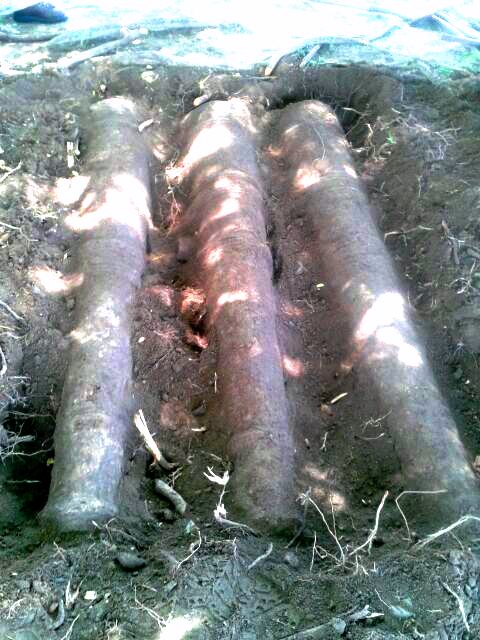
“It’s really amazing they were able to remain undetected all these years,” said Sean Krigger, acting director of the Planning and Natural Resources Department’s State Historic Preservation Office.
He said Wednesday that one of the workers first spotted the signature flare of a cannon’s barrel and that further digging uncovered the other two. Krigger said the cannons were removed from the beach and remain in a secure place.
The cannons are seven feet long, have long barrels made for shooting long distances, are made of iron and are in rusty condition.
Historian David Knight said chances are good that these are the cannons that were moved along with ammunition from Fortsberg in Coral Bay to Cruz Bay after the fort was decommissioned in 1765.
According to Knight, Fortsberg had four cannons. He said research showed that the cannon sitting on the inland side of the Cruz Bay dock was one of those four. He said it had been used as hitching post on an earlier version of the Cruz Bay dock since 1838.
What happened to the other three remained unknown.
Knight said the Danish crown took over St. John from the West India and Guinea Co. in 1754 and 1755. The company had operated St. John as a business, and Knight said since the bulk of its operations were in Coral Bay, the fort was located at the eastern end of the island.
When Denmark assumed command of the island, the government wanted a base at the western end of the St. John to facilitate communication with St. Thomas. They built a five-room barracks building, housing for officers and a kitchen in what is now Cruz Bay Park. Knight said they couldn’t decide on whether to build the fort at Gallows Point or at its present location so construction was delayed until the late 1770s.
He said a 1780 Peter Oxholm report showed that the cannons were placed in a crude earthworks at the beach, where the salt water rusted them.
“They became unserviceable and nobody has been able to find them,” Knight said.
It remains unknown if the cannons remained at the beach or might be the cannons in a 1936 picture of the battery entrance, Knight said.
Krigger said he hopes to do a ground-penetrating radar study of the area to determine if anymore artifacts are buried at the beach.
Meanwhile, the cannons are a hot topic of conversation around St. John.
“It’s exciting,” St. John Administrator Leona Smith said.





